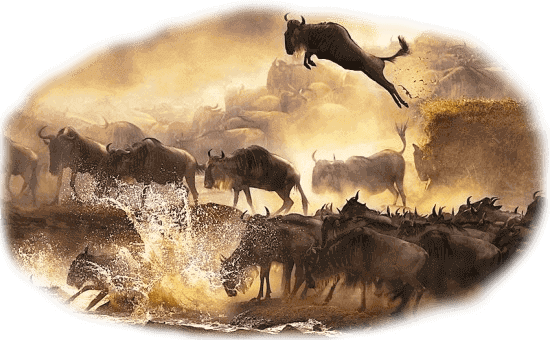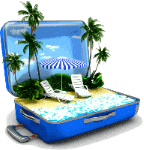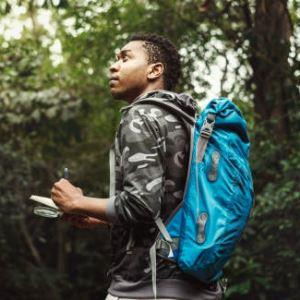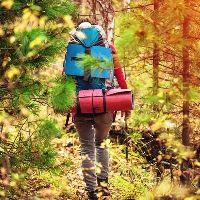 Kenya has long been a magnet for international tourists, and among its most enthusiastic visitors are travelers from Germany. The allure of the country lies in its rich variety of attractions ranging from majestic wildlife and dramatic landscapes to vibrant local culture and tranquil beach escapes. For German tourists, Kenya offers a multifaceted experience that seamlessly blends adventure, education, and relaxation. One of the biggest draws is the chance to embark on an unforgettable safari. The Maasai Mara, especially during the Great Migration, remains a bucket-list destination for many German nature lovers. Here, they can witness the raw beauty of wildlife, from lions to elephants, in their natural habitat. Amboseli National Park, with its breathtaking views of Mount Kilimanjaro, and the flamingo-filled shores of Lake Nakuru also attract considerable interest. Many German travelers favor tour companies that offer guided experiences in their native language, elevating comfort and understanding during the journey. These factors contribute to the increasing popularity of the best safari tours in Kenya for German tourists. Beyond the wild, Kenya’s cultural landscape provides depth to any visit. German travelers often immerse themselves in local traditions through village visits, Swahili cooking classes, and artisan craft workshops. In bustling cities like Nairobi and Mombasa, they explore local markets, museums, and historical sites, gaining a richer understanding of Kenya's social fabric. Mount Kenya offers a haven for the adventurous, with trekking routes that challenge and reward those who seek high-altitude experiences. Kenya’s coastline is another favorite, especially for Germans looking to unwind. The palm-lined shores of Diani Beach, coupled with the marine wonders of Watamu and Malindi, make for idyllic beach holidays. Activities such as snorkeling, diving, and dhow sailing add an adventurous edge to these relaxing escapes. Resorts along the coast cater to international visitors with tailored services, and many offer German-language assistance, ensuring that every aspect of the stay feels welcoming and accessible. German tourists are particularly drawn to the balance Kenya offers where thrilling safaris, cultural immersion, and peaceful coastal retreats coexist in one destination. The climate, friendly hospitality, and diversity of experiences continue to make Kenya an appealing choice for both first-time and repeat visitors from Germany. With its combination of natural beauty, rich heritage, and tailored tourism services, Kenya remains a top travel destination for German adventurers and leisure-seekers alike. From the snow-capped peaks of Mount Kenya to the sun-drenched beaches of the Indian Ocean, the country offers something for every kind of traveler. German visitors often note the seamless blend of exploration and relaxation, which allows for a deeply fulfilling travel experience. Whether it’s encountering elephants in the wild, haggling in a local market, or sipping fresh coconut juice on a coastal hammock, the diversity and authenticity of Kenya leave a lasting impression. The hospitality of the Kenyan people and the availability of German-language support in many tourism sectors only enhance the experience, making it both comfortable and enriching. For many German tourists, a trip to Kenya is not just a holiday, but a journey into a world of discovery, connection, and natural wonder.
Kenya has long been a magnet for international tourists, and among its most enthusiastic visitors are travelers from Germany. The allure of the country lies in its rich variety of attractions ranging from majestic wildlife and dramatic landscapes to vibrant local culture and tranquil beach escapes. For German tourists, Kenya offers a multifaceted experience that seamlessly blends adventure, education, and relaxation. One of the biggest draws is the chance to embark on an unforgettable safari. The Maasai Mara, especially during the Great Migration, remains a bucket-list destination for many German nature lovers. Here, they can witness the raw beauty of wildlife, from lions to elephants, in their natural habitat. Amboseli National Park, with its breathtaking views of Mount Kilimanjaro, and the flamingo-filled shores of Lake Nakuru also attract considerable interest. Many German travelers favor tour companies that offer guided experiences in their native language, elevating comfort and understanding during the journey. These factors contribute to the increasing popularity of the best safari tours in Kenya for German tourists. Beyond the wild, Kenya’s cultural landscape provides depth to any visit. German travelers often immerse themselves in local traditions through village visits, Swahili cooking classes, and artisan craft workshops. In bustling cities like Nairobi and Mombasa, they explore local markets, museums, and historical sites, gaining a richer understanding of Kenya's social fabric. Mount Kenya offers a haven for the adventurous, with trekking routes that challenge and reward those who seek high-altitude experiences. Kenya’s coastline is another favorite, especially for Germans looking to unwind. The palm-lined shores of Diani Beach, coupled with the marine wonders of Watamu and Malindi, make for idyllic beach holidays. Activities such as snorkeling, diving, and dhow sailing add an adventurous edge to these relaxing escapes. Resorts along the coast cater to international visitors with tailored services, and many offer German-language assistance, ensuring that every aspect of the stay feels welcoming and accessible. German tourists are particularly drawn to the balance Kenya offers where thrilling safaris, cultural immersion, and peaceful coastal retreats coexist in one destination. The climate, friendly hospitality, and diversity of experiences continue to make Kenya an appealing choice for both first-time and repeat visitors from Germany. With its combination of natural beauty, rich heritage, and tailored tourism services, Kenya remains a top travel destination for German adventurers and leisure-seekers alike. From the snow-capped peaks of Mount Kenya to the sun-drenched beaches of the Indian Ocean, the country offers something for every kind of traveler. German visitors often note the seamless blend of exploration and relaxation, which allows for a deeply fulfilling travel experience. Whether it’s encountering elephants in the wild, haggling in a local market, or sipping fresh coconut juice on a coastal hammock, the diversity and authenticity of Kenya leave a lasting impression. The hospitality of the Kenyan people and the availability of German-language support in many tourism sectors only enhance the experience, making it both comfortable and enriching. For many German tourists, a trip to Kenya is not just a holiday, but a journey into a world of discovery, connection, and natural wonder.
Favorite Activities of German Tourists in Kenya
| Activity Type | Specific Attractions or Experiences | Reasons for Popularity |
|---|---|---|
| Wildlife Safaris | Maasai Mara, Amboseli, Lake Nakuru | Big Five, German-speaking guides |
| Cultural Experiences | Village visits, local markets, cooking classes | Cultural immersion, authenticity |
| Mountain Adventures | Trekking Mount Kenya | Scenic views, outdoor adventure |
| Beach Holidays | Diani, Watamu, Malindi | Relaxation, water sports, tailored services |
Wildlife Safaris in Kenya That German Tourists Adore Most
Kenya is world-renowned for its safari adventures, and German tourists are among the most enthusiastic participants. A trip to Kenya would be incomplete without immersing oneself in the grandeur of its untamed wilderness. For many German visitors, a safari is not just an activity it's a lifelong dream realized. From the expansive plains of the Maasai Mara to the elephant-rich terrain of Amboseli, the wildlife safari experience in Kenya consistently ranks high among German travelers’ favorite activities. The Maasai Mara National Reserve is often the first choice for German tourists, particularly during the Great Migration. This awe-inspiring natural event sees millions of wildebeests and zebras cross the Mara River, pursued by predators in a primal display of survival. It's a photographer's dream and a thrilling adventure for travelers who want to witness nature at its most raw and dramatic. Amboseli National Park is another major highlight. Famous for its large elephant herds and views of snow-capped Mount Kilimanjaro, it provides German tourists with an iconic African safari backdrop. Here, visitors can take part in guided game drives, some even in German, enhancing both accessibility and enjoyment. Lake Nakuru National Park also appeals, especially to birdwatchers, with its striking flamingo flocks and diverse bird species. For travelers seeking more intimate and less crowded settings, parks like Samburu and Tsavo offer equally rewarding experiences. German tourists enjoy spotting unique northern species like the Grevy's zebra and gerenuk in Samburu, while Tsavo's expansive landscapes offer a more rugged and adventurous experience. Beyond just wildlife spotting, many safaris cater to immersive experiences such as walking safaris, night game drives, and cultural interactions with local communities like the Maasai and Samburu people. These additions enrich the overall journey, allowing German visitors to gain a broader understanding of both Kenya's natural ecosystems and cultural diversity. Kenya has invested significantly in its tourism infrastructure, making safari travel both seamless and enjoyable. The availability of domestic flights, well-maintained roads to major parks, and a range of accommodation options from luxury lodges to eco-camps ensures convenience for all types of travelers. Many tour operators specialize in European clientele and go a step further by offering services in German, helping bridge language barriers and enhancing the overall experience. Tailored packages that consider travel style, budget, and interests make it easier for German tourists to personalize their adventure. Eco-conscious travelers also appreciate Kenya's growing emphasis on sustainable tourism, with eco-lodges and conservation-driven experiences gaining popularity. This blend of thoughtful service and environmental responsibility ensures comfort without compromising authenticity. From epic migrations and iconic predators to serene landscapes and cultural depth, safaris in Kenya offer some of the top wildlife experiences in Kenya for German visitors. With its unparalleled biodiversity and warm hospitality, Kenya continues to captivate the hearts of German tourists seeking an unforgettable African adventure.
Best Safari Parks in Kenya for German Wildlife Enthusiasts
For German wildlife enthusiasts, Kenya offers a wealth of safari parks that cater to a wide range of interests from the iconic Big Five to rare species and breathtaking landscapes. Each park provides a unique experience, ensuring that every visitor can find their perfect adventure.
- Maasai Mara National Reserve: Famed for the Great Migration, Maasai Mara is a must-visit. German tourists are drawn to the thrilling river crossings, abundant predators, and sweeping grasslands that create unforgettable photographic moments.
- Amboseli National Park: Known for its large elephant herds and views of Mount Kilimanjaro, Amboseli combines scenic beauty with rich biodiversity. Its accessible game drives and cultural visits to Maasai villages make it a favorite among German visitors.
- Lake Nakuru National Park: This park offers a unique landscape of flamingo-lined shores and acacia woodlands. It's particularly popular with birdwatchers and travelers hoping to see endangered rhinos in a peaceful setting.
- Samburu National Reserve: For those interested in rare species like the Grevy's zebra and the reticulated giraffe, Samburu provides a more off-the-beaten-path experience. Its semi-arid terrain and quieter atmosphere appeal to nature lovers and seasoned safari-goers.
- Tsavo East and West National Parks: These two adjoining parks form one of the largest protected areas in Kenya. Known for their rugged beauty and diverse wildlife, they offer German tourists an authentic, less commercialized safari adventure.
- Meru National Park: Less visited but equally impressive, Meru offers lush landscapes, rivers, and a strong sense of solitude. It appeals to German tourists looking to avoid crowds while still enjoying high-quality wildlife viewing.
Each of these parks contributes something unique to the Kenyan safari experience. Whether it's the drama of predator-prey interactions in Maasai Mara or the tranquility of birdwatching in Lake Nakuru, German wildlife enthusiasts will find these parks rich in opportunity and wonder.
From Mountains to Markets: Kenya Through German Travelers
German travelers exploring Kenya often find themselves captivated not just by the wildlife, but also by the country's remarkable cultural and geographic diversity. From the soaring heights of Mount Kenya to the bustling street markets of Nairobi and Mombasa, the country offers a multifaceted experience that resonates deeply with culturally curious visitors. For many Germans, Mount Kenya is more than a majestic peak it’s a trekking challenge and an opportunity to engage with Kenya’s natural beauty up close. Adventurers often embark on guided hikes that take them through alpine meadows, bamboo forests, and rugged terrains that offer both physical exertion and spiritual fulfillment. These hikes are usually organized by professional guides who ensure safety and provide insight into the region's ecology and history. Markets across Kenya also draw the attention of German tourists. In Nairobi’s Maasai Market or the Old Town bazaars of Mombasa, visitors browse local crafts, jewelry, beadwork, and spices. These vibrant venues serve as windows into daily Kenyan life and are often among the most memorable stops for travelers looking to connect with locals and understand the culture beyond brochures and guidebooks. Cultural tours are increasingly popular, offering visits to traditional villages of communities like the Maasai, Samburu, and Kikuyu. In these immersive experiences, German tourists can learn about indigenous music, dance, customs, and spiritual beliefs. Many also participate in workshops that teach traditional Swahili cooking, bead making, or wood carving hands-on activities that allow for deeper appreciation of Kenyan craftsmanship and community life. Kenya also offers a growing number of eco-friendly and sustainable travel opportunities, which align well with the values of many German visitors. Whether through volunteer tourism, conservation projects, or low-impact trekking adventures, these programs enable tourists to engage meaningfully while supporting local initiatives. The variety of adventure activities for Germans visiting Kenya is a key reason for the country's growing appeal. From climbing rugged mountains and learning tribal customs to shopping in open-air markets and taking part in community-driven experiences, Kenya offers an enriching journey that goes far beyond the ordinary vacation. German visitors can trek the slopes of Mount Kenya, Africa's second-highest peak, guided by local experts who provide insights into the region's unique flora, fauna, and geology. These treks offer a thrilling blend of physical endurance and breathtaking vistas. Beyond nature, German tourists immerse themselves in Kenyan culture by visiting traditional villages, where they participate in storytelling, dance, and daily routines that foster cross-cultural understanding. In cities like Nairobi and Mombasa, local markets provide a sensory explosion of color, sound, and flavor. Here, travelers can shop for handcrafted souvenirs, sample exotic spices, and witness the heartbeat of urban Kenyan life. Hands-on workshops in Swahili cooking, beadwork, and woodcarving allow German travelers to engage deeply with local crafts and skills. Many of these experiences are part of sustainable tourism initiatives that support local communities and preserve traditional knowledge. For German tourists seeking authentic, educational, and exhilarating moments, Kenya delivers a truly holistic adventure.
Cultural Experiences and Nature Adventures Germans Love in Kenya
German tourists visiting Kenya are often pleasantly surprised by the country’s vibrant mix of cultural traditions and natural beauty. While safaris tend to headline most itineraries, many travelers from Germany find equal joy in discovering Kenya through its people, landscapes, and heritage beyond the big game parks. One of the top cultural draws is visiting traditional communities such as the Maasai, Samburu, and Kikuyu. These experiences often involve guided tours that allow visitors to observe daily life, participate in traditional dances, and even join in local meals. For German tourists seeking connection, these encounters foster a deeper understanding of Kenya’s diverse ethnic fabric. The cities of Nairobi and Mombasa also offer a rich cultural tapestry through their vibrant markets, colonial-era architecture, and museums. At places like the Nairobi National Museum or Fort Jesus in Mombasa, German travelers can explore Kenya’s history from pre-colonial times through to the modern era. Street food tours and cooking classes focused on Swahili cuisine are also growing in popularity, offering an immersive culinary adventure. Nature lovers are equally rewarded. The foothills and trails of Mount Kenya provide a stunning backdrop for hiking and trekking. German adventurers are drawn to the scenic diversity that ranges from bamboo forests to alpine moorlands, and many of these treks are guided by locals who share ecological insights and traditional folklore. Kenya is a rising destination for eco-tourism and sustainable travel. German visitors often choose eco-lodges, volunteer programs, and conservation-focused tours that align with their values. Whether planting trees with local communities or participating in wildlife monitoring efforts, these activities allow tourists to leave a positive impact while enjoying meaningful travel. Among the most underrated yet rewarding experiences are birdwatching tours in Kenya for German visitors. The country's diverse habitats wetlands, forests, savannahs, and coastal ecosystems are home to more than 1,000 bird species. Lake Naivasha, Lake Baringo, and Kakamega Forest are prime birding destinations that draw German ornithology enthusiasts who delight in spotting kingfishers, African fish eagles, sunbirds, and endemic species. German tourists value more than sightseeing; they seek knowledge, connection, and enrichment. Kenya's cultural warmth, natural splendor, and opportunities for genuine interaction continue to impress and inspire. For German travelers, these moments from crafting beads with local artisans to marveling at the call of a rare bird create lasting memories rooted in authenticity and appreciation.
Why German Tourists Choose Kenya for Scenic Beach Holidays
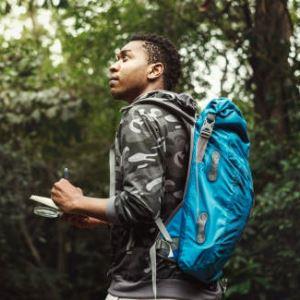 Kenya's coastline is a magnet for German tourists seeking a peaceful yet vibrant escape. Stretching along the Indian Ocean, it features a series of pristine beaches, charming coastal towns, and marine ecosystems teeming with life. For German visitors, the coast delivers a laid-back contrast to inland safari adventures, offering sun-soaked relaxation with just the right dash of exploration. Diani Beach is perhaps the most famous and frequently visited stretch of sand by German tourists. With its powdery white shores, swaying palms, and crystal-clear waters, it’s the perfect destination for swimming, sunbathing, or simply unwinding. Nearby, travelers can embark on snorkeling and scuba diving excursions in the coral-rich Kisite-Mpunguti Marine Park, where dolphins and vibrant reef fish abound. Further north, Watamu and Malindi have earned a loyal following among German travelers. These towns blend beachside serenity with cultural intrigue, thanks to their Swahili-Arabic heritage and proximity to historical ruins like Gede. The marine reserves in this region are ideal for eco-conscious tourists, offering glass-bottom boat rides and nature walks through mangrove forests. German tourist hotspots on the Kenyan coast are not only about beach lounging; they’re also hubs for activities like kite surfing, deep-sea fishing, and dhow sailing. For those seeking wellness, many resorts offer yoga sessions, spa treatments, and healthy dining often with services provided in German to ensure a more personalized experience. What makes the Kenyan coast particularly appealing to German tourists is the balance it strikes between relaxation, cultural enrichment, and ecological adventure. Resorts and boutique hotels often feature sustainability initiatives and community engagement programs, aligning with the values of many German travelers who prioritize responsible tourism. Whether wandering through Mombasa’s Old Town, taking a sunset cruise on a traditional dhow, or exploring the Arabuko Sokoke Forest, German tourists discover that Kenya’s coast has much more to offer than postcard-perfect beaches. It is a region where history, nature, and leisure merge, creating memorable experiences that complement the country’s more well-known safari attractions. As interest continues to grow, Kenya’s coast is becoming a key part of the itinerary for German visitors both as a standalone destination and as a rejuvenating finale to a more extensive African adventure. German tourists are increasingly recognizing that the Kenyan coastline offers more than just a beach escape it’s a cultural, ecological, and recreational treasure trove. Whether it’s exploring marine parks, relaxing in eco-resorts, or engaging with local communities, the coast offers a multi-dimensional experience. Many German travelers plan several days, if not a full week, at the coast to take full advantage of its variety. It serves as the perfect conclusion to an inland safari or cultural tour, giving travelers the opportunity to unwind, reflect, and absorb the full richness of their journey. The increasing availability of German-speaking services and direct international flights to coastal airports have further contributed to the coast’s popularity, cementing its status as an essential component of the Kenyan travel experience.
Kenya's coastline is a magnet for German tourists seeking a peaceful yet vibrant escape. Stretching along the Indian Ocean, it features a series of pristine beaches, charming coastal towns, and marine ecosystems teeming with life. For German visitors, the coast delivers a laid-back contrast to inland safari adventures, offering sun-soaked relaxation with just the right dash of exploration. Diani Beach is perhaps the most famous and frequently visited stretch of sand by German tourists. With its powdery white shores, swaying palms, and crystal-clear waters, it’s the perfect destination for swimming, sunbathing, or simply unwinding. Nearby, travelers can embark on snorkeling and scuba diving excursions in the coral-rich Kisite-Mpunguti Marine Park, where dolphins and vibrant reef fish abound. Further north, Watamu and Malindi have earned a loyal following among German travelers. These towns blend beachside serenity with cultural intrigue, thanks to their Swahili-Arabic heritage and proximity to historical ruins like Gede. The marine reserves in this region are ideal for eco-conscious tourists, offering glass-bottom boat rides and nature walks through mangrove forests. German tourist hotspots on the Kenyan coast are not only about beach lounging; they’re also hubs for activities like kite surfing, deep-sea fishing, and dhow sailing. For those seeking wellness, many resorts offer yoga sessions, spa treatments, and healthy dining often with services provided in German to ensure a more personalized experience. What makes the Kenyan coast particularly appealing to German tourists is the balance it strikes between relaxation, cultural enrichment, and ecological adventure. Resorts and boutique hotels often feature sustainability initiatives and community engagement programs, aligning with the values of many German travelers who prioritize responsible tourism. Whether wandering through Mombasa’s Old Town, taking a sunset cruise on a traditional dhow, or exploring the Arabuko Sokoke Forest, German tourists discover that Kenya’s coast has much more to offer than postcard-perfect beaches. It is a region where history, nature, and leisure merge, creating memorable experiences that complement the country’s more well-known safari attractions. As interest continues to grow, Kenya’s coast is becoming a key part of the itinerary for German visitors both as a standalone destination and as a rejuvenating finale to a more extensive African adventure. German tourists are increasingly recognizing that the Kenyan coastline offers more than just a beach escape it’s a cultural, ecological, and recreational treasure trove. Whether it’s exploring marine parks, relaxing in eco-resorts, or engaging with local communities, the coast offers a multi-dimensional experience. Many German travelers plan several days, if not a full week, at the coast to take full advantage of its variety. It serves as the perfect conclusion to an inland safari or cultural tour, giving travelers the opportunity to unwind, reflect, and absorb the full richness of their journey. The increasing availability of German-speaking services and direct international flights to coastal airports have further contributed to the coast’s popularity, cementing its status as an essential component of the Kenyan travel experience.
Top Beach Destinations in Kenya Popular with German Tourists
Kenya’s coastline offers an unforgettable experience for German tourists looking to relax by the sea while engaging in cultural and natural discovery. The diversity of Kenya’s beach destinations means there’s something for everyone from tranquil retreats to lively towns buzzing with activities. Among the most popular is Diani Beach, renowned for its long, palm-lined shoreline, fine white sand, and calm, turquoise waters. German travelers particularly enjoy its laid-back vibe, which pairs well with luxury beach resorts and water sports like snorkeling and kite surfing. Watamu, further north, is another gem. It blends serene beaches with fascinating ecological experiences, such as exploring the Watamu Marine National Park or visiting the nearby Arabuko Sokoke Forest. German tourists seeking both adventure and relaxation find Watamu to be a perfect balance. The town also offers a strong sense of community, with sustainable tourism projects that align with the values of many environmentally conscious German visitors. Malindi, a coastal town with deep Swahili, Italian, and Arab influences, offers a more urban coastal experience while retaining its charm. Its unique blend of cultures, excellent seafood, and coral reefs make it a favored destination for German visitors who appreciate both cultural depth and marine activities. Lamu Island, though less frequented, is gaining popularity among German tourists looking for an off-the-beaten-path escape. With its car-free streets, traditional dhow boats, and historical Swahili architecture, Lamu provides a peaceful retreat ideal for those wanting to immerse themselves in authentic Kenyan coastal life. Mombasa, Kenya’s second-largest city, is a vibrant hub that mixes history, commerce, and leisure. German travelers often explore Fort Jesus, Old Town, and lively beaches like Nyali and Bamburi. Mombasa’s accessibility, with an international airport and well-developed infrastructure, makes it an easy starting or ending point for beach holidays. These destinations form a rich tapestry of hotspots on the Kenyan coast. Whether it’s soaking up the sun in Diani, birdwatching in Watamu, enjoying seafood in Malindi, exploring the heritage of Lamu, or discovering the energy of Mombasa, German tourists can find a coastal haven that suits their interests and travel style. The combination of scenic beauty, cultural richness, and hospitality ensures that Kenya’s coast remains a highlight of any German traveler’s African adventure.
FAQs About Favourite Activities Germans Can Do in Kenya
Kenya offers German tourists an exciting mix of adventure, culture, and natural beauty. Whether planning a once-in-a-lifetime safari or a relaxing beach holiday, German travelers often have similar questions when preparing for their trip. Here are the most commonly asked questions and explained clearly:
- What are the best safari parks in Kenya for German tourists? The Maasai Mara, Amboseli, and Lake Nakuru are top choices due to their wildlife diversity and availability of German-speaking guides. These parks offer a range of experiences from game drives to birdwatching.
- Is it safe for Germans to travel to Kenya? Yes, Kenya is generally safe for tourists. Stick to well-traveled areas, use licensed tour operators, and follow local advice. Many regions popular with tourists are secure and well-patrolled.
- Can I find German-speaking guides in Kenya? Absolutely. Many safari operators and resorts offer services in German to cater to the growing number of German-speaking visitors. Booking through a specialized travel agency increases your chances.
- What are the top cultural experiences for Germans in Kenya? German tourists love visiting Maasai and Samburu villages, taking Swahili cooking classes, and shopping at local markets in Nairobi or Mombasa. These experiences offer real cultural immersion.
- When is the best time for Germans to visit Kenya? The dry seasons June to October and December to March are ideal for wildlife viewing and beach holidays. These months offer good weather and excellent visibility for safaris and marine activities.
- What should German tourists pack for a trip to Kenya? Lightweight clothing, a sunhat, sunscreen, sturdy shoes for hikes, and a camera are essentials. Also bring insect repellent and any personal medications. Layers are helpful for cool mornings.
- What beach destinations in Kenya do Germans prefer? Diani, Watamu, and Malindi are favorites due to their white sand beaches, warm waters, and water sports. Many resorts cater to German guests with language assistance and familiar cuisine.
- Are there birdwatching tours in Kenya for German travelers? Yes, Kenya is a birdwatcher's paradise. Places like Lake Naivasha, Kakamega Forest, and Lake Baringo offer guided birdwatching tours tailored for German nature enthusiasts.
These FAQs help German tourists prepare for a rewarding and smooth experience while exploring Kenya’s many wonders.
